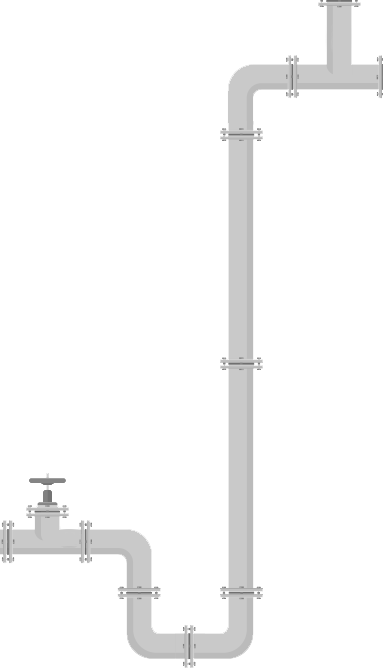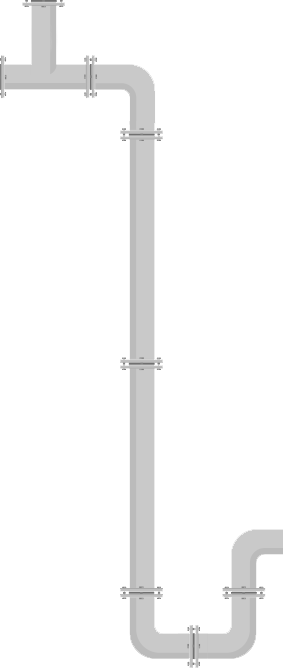The ABCs of Plumbing: 9 Key Terminologies Every Homeowner Should Know
Posted by Jason Genah on 18-09-2023

As a homeowner, there are a few things around the house that you should be familiar with. Plumbing is one of the critical areas, along with electrical and air conditioning, that requires some knowledge about the equipment and the processes.
However, before all that, you need to know the essential terminologies and the different tools to keep around the house.
9 Key Terminologies Every Homeowner Needs to Know
Here are nine key plumbing terminologies every homeowner should know before attempting to work on anything plumbing-related or contacting professional plumbers in Toronto.
1. Shut-off Valve
One of the most essential terms, a shut-off valve, is crucial to every household plumbing fixture. As the name suggests, it shuts off the water if a fixture leaks without affecting the flow in the rest of the house. The shut-off valve looks like a knob. It is found on a pipe or a wall next to the fixture.
For example, a toilet’s shut-off valve is near the base next to the pot. The valves should indicate which direction to spin it to shut it off. In most cases, no tools are required to operate the shut-off valve.
2. P-Traps and S-Traps
P-traps and S-traps refer to the shape of the plumbing pipe. They are essential in every household as they prevent sewer gas from entering the home after flushing. Because of the design, they hold a small amount of water, which acts as a barrier between the odours from the sewer and your toilet.
If the P-traps or S-traps dry out, the sewer odour will enter your home. You should contact our professional plumbers in Toronto and the GTA at that point.
3. Augers/ Snakes
Augers and snakes unclog drains, toilets, or underground pipes. These are flexible metal rods that have a curved end, and they come in different shapes for different purposes. The first step in unclogging is typically a plunger, but if that fails, an auger or snake is used for more heavy-duty tasks.
A drain snake is for smaller lines, while augers are for bigger pipes. The rod’s flexible nature allows it to be shoved inside a pipe to where the clog is and then twisted to break it loose. These can be handy tools to keep around the house.
4. Flapper
The flapper is a valve for the flush tank of your toilet. It is located at the bottom of the tank and connects to the handle. When you flush, water can move from the tank to the bowl.
It is also connected to the float valve, which is the balloon that floats to the top, identifying that the tank is refilled. It is also known as a flapper valve.
5. Septic system
A septic system in a home is an independent sewage treatment system not connected to the city’s major sewage system. This tank contains enzymes and bacteria that break down the waste.
A septic system includes a tank, septic field, and connected pipes. It connects to the pipes in your home that are not connected to the city’s sewage management system. Note that not all houses have a septic system. You can confirm this by checking property records.
6. Backflow/ Overflow
Backflow is when the water in your pipes starts flowing in the opposite direction, i.e. back into the main water supply. This issue should be immediately addressed as backflow can lead to contaminated water returning to the main water supply and causing health problems.
Call Drain King Plumbers and have our professional plumbers in Toronto and GTA handle your backflow problems.
Overflow, on the other hand, is when a clog prevents water from being drained outside in the sewer lines, causing more water to pour out of the pipes in your home. This issue, as well as backflow, can lead to burst pipes.
7. Closet Flange
A closet flange is a ring that connects the closet bend to the floor and, thus, the toilet. The closet bend connects the toilet to the drain, and the flange allows the toilet to sit in place over the drain. It includes closed bolts anchoring the toilet to the home drainage system.
These come in different materials, such as PVC or ABS, cast iron, brass, and other specialized options.
8. Pressure Tank
A pressure tank is not part of every household. It is found in well systems and uses compressed air to circulate water through the house. The water from the well first enters the bottom of the pressure tank with the help of a pump and starts to increase the air pressure inside.
As the water level increases, so does the air pressure, and once maximum pressure is reached, the pump shuts off, preventing more water from pouring in. This compressed air pushes the water through the house’s pipes when an appliance needs it.
9. Angle Stop
An angle stop or compression valve is between the plumbing fixture and the water supply. Like the shut-off valve, it shuts off the water in case of emergencies and to repair fixtures. There are three main types of angle stops, gate valve, ball valve, and globe valve. They are made from either zinc alloy, PVC, or copper.
Why do you need to know these plumbing terminologies?
While it is not necessary, it is always a good idea to familiarize yourself with the significant terminologies of plumbing. This knowledge will allow you to not only understand what might be the issue but also explain the problem to professional plumbers in Toronto and the GTA.
In some cases, there may be a simple solution that a professional can guide you through if you know the correct terminology. The knowledge is also valuable when buying replacement parts or tools to fix common plumbing problems.
For more information about plumbing in Toronto, call Drain King Plumbers at 833-983-5663 or contact us here.




